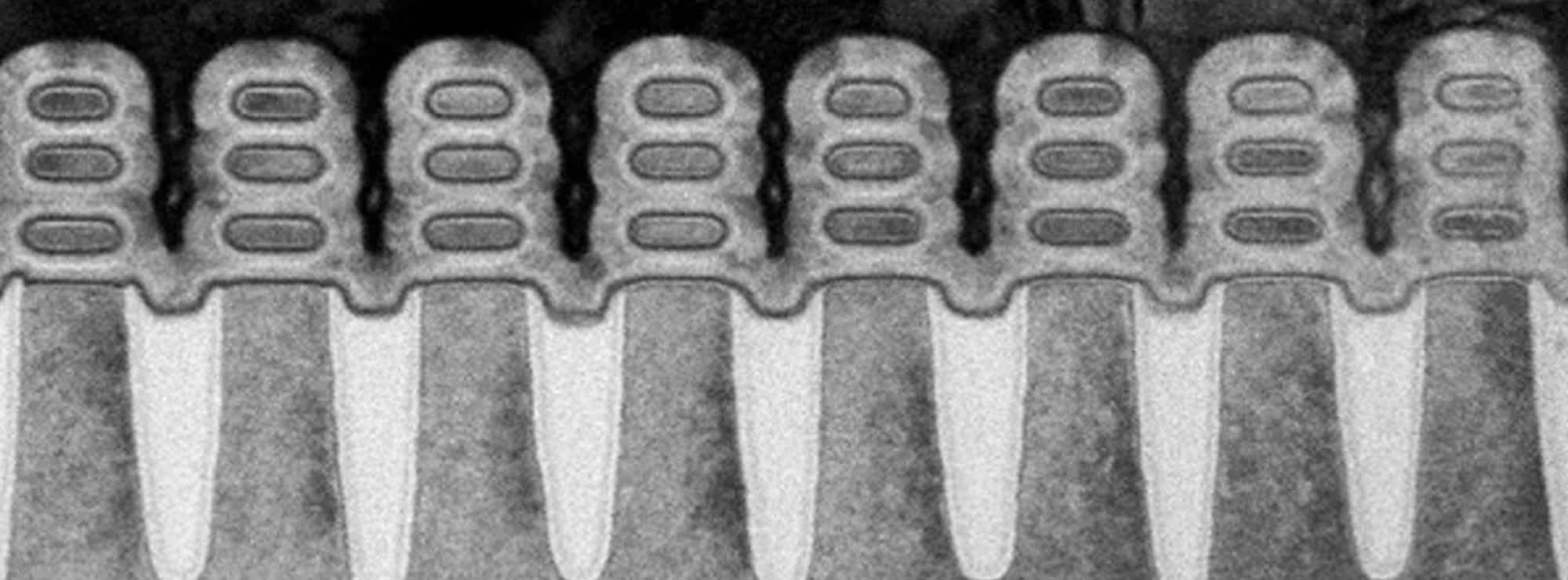Foundries look to GAAFET for new process nodes beyond 3 nm
Why it matters: The transition from planar transistors to FinFET was plenty to proceed Moore'due south Constabulary relevant for the last 10 years, but fifty-fifty that design is running out of steam. Gate-all-effectually transistors expect promising for 3 nm and across, simply that transition could be the costliest even so.
While most advanced chips today are manufactured on a 7 nm or five nm process node, large foundries like TSMC and GlobalFoundries have been busy developing newer nodes at three nm and 2 nm, based on side by side-generation, gate-accommodating transistors (GAA-FET). Although GAA-FETs offer some advantages such as better scalability, faster switching times, amend drive currents, and lower leakage, FinFET remains the preferred technology every bit manufacturers believe they tin can squeeze more out of it.
For example, TSMC said at the Engineering science Symposium last year that its N3 technology offers upwards to 50 percent amend performance, up to a 30 per centum reduction in power consumption, and more than importantly, allows for 1.7 times the density of N5. Using a proven and more predictable process node volition allow TSMC ample time to examination GAA-FET for apply at 2 nm. Last we've heard, the company planned to have a 2 nm process node ready for mass production by 2024.

According to a Semiconductor Engineering study, Intel and Samsung are also difficult at work on transitioning to 3 nm and 2 nm nodes, and the latter could practise so by the end of next twelvemonth. There are multiple types of GAA-FET, and nosotros know Samsung is planning to apply nano-sheet-based MBC-FETs (Multi-Bridge Aqueduct FET).
Essentially, MBC-FET is a FinFET turned on its side with the gate wrapped around nano-sheets of silicon grown on a substrate. Intel has a like implementation based on "nanoribbons" planned for its 2025 chips, although this schedule could alter under the new leadership.

In any case, it looks like FinFET is on the fashion out, while foundries will have to adopt the GAA-FET for use beyond 3 nm procedure nodes. This isn't simply the next transistor for avant-garde chips -- it might be the only pick for the foreseeable future, with a few variations across foundries. The costs are also higher, which makes information technology unlikely that many foundries volition afford the transition.
As things evolve, manufacturers may use loftier-mobility semiconductors like germanium, gallium antimonide, and indium arsenide to improve functioning, but GAA-FET may be the final pace in Moore's Law. That ways manufacturers will have to get creative with advanced packaging and new chip architectures to keep the same cadence of progress.
Source: https://www.techspot.com/news/88405-foundries-look-gaafet-new-process-nodes-beyond-3.html
Posted by: dickersonloste1954.blogspot.com


0 Response to "Foundries look to GAAFET for new process nodes beyond 3 nm"
Post a Comment